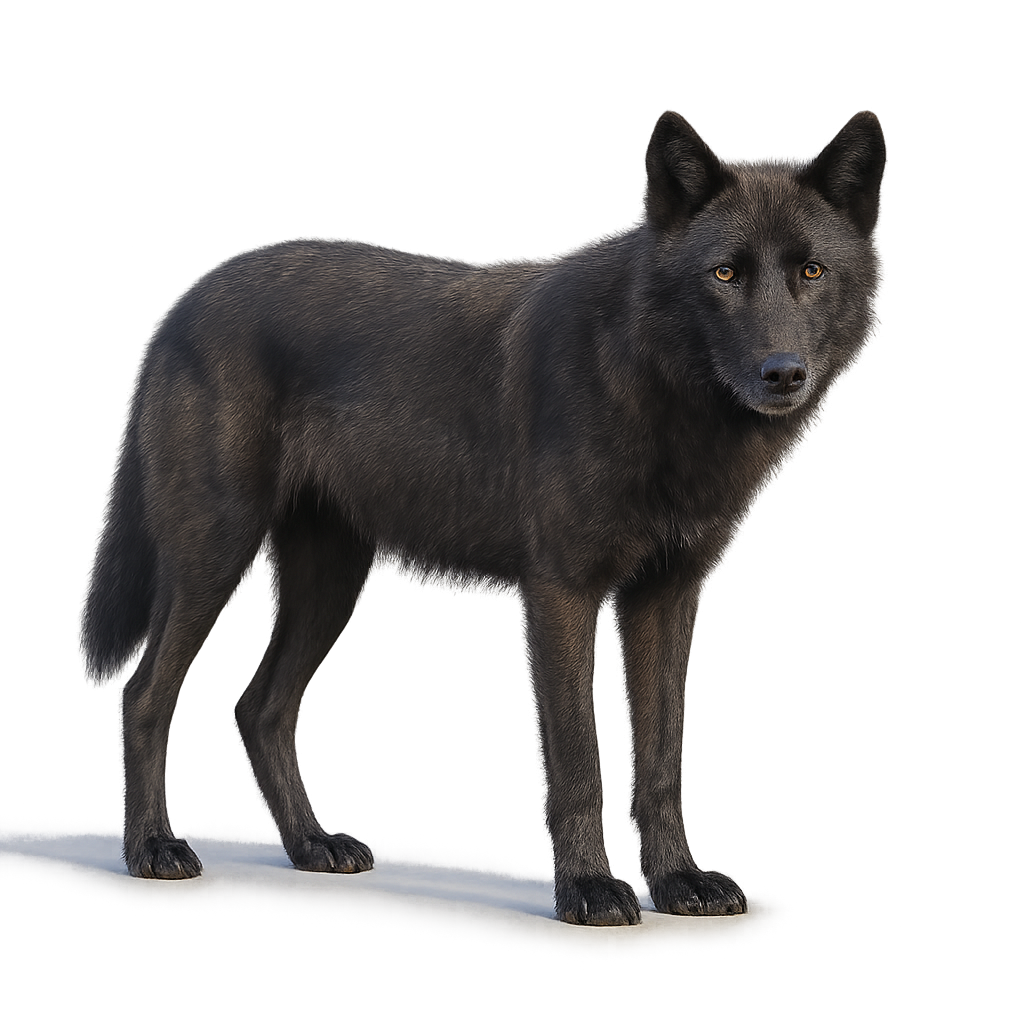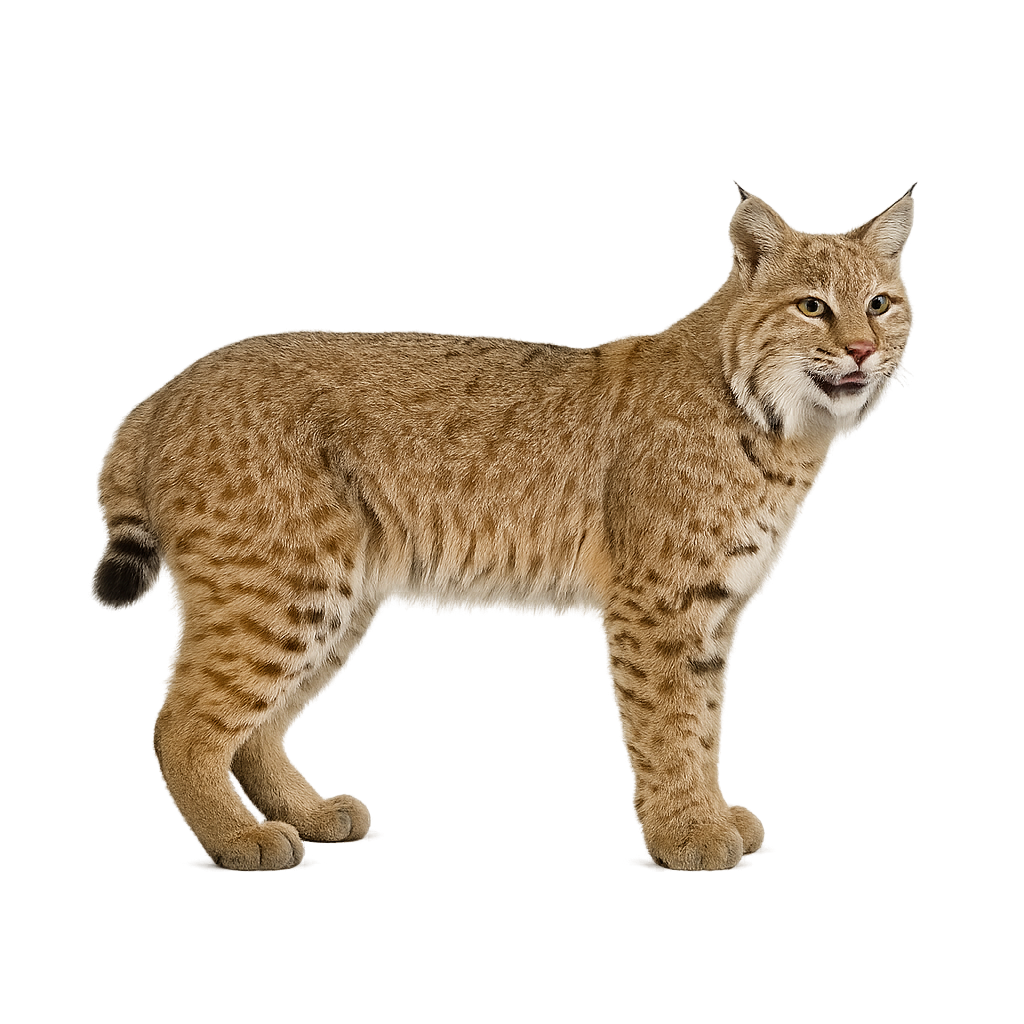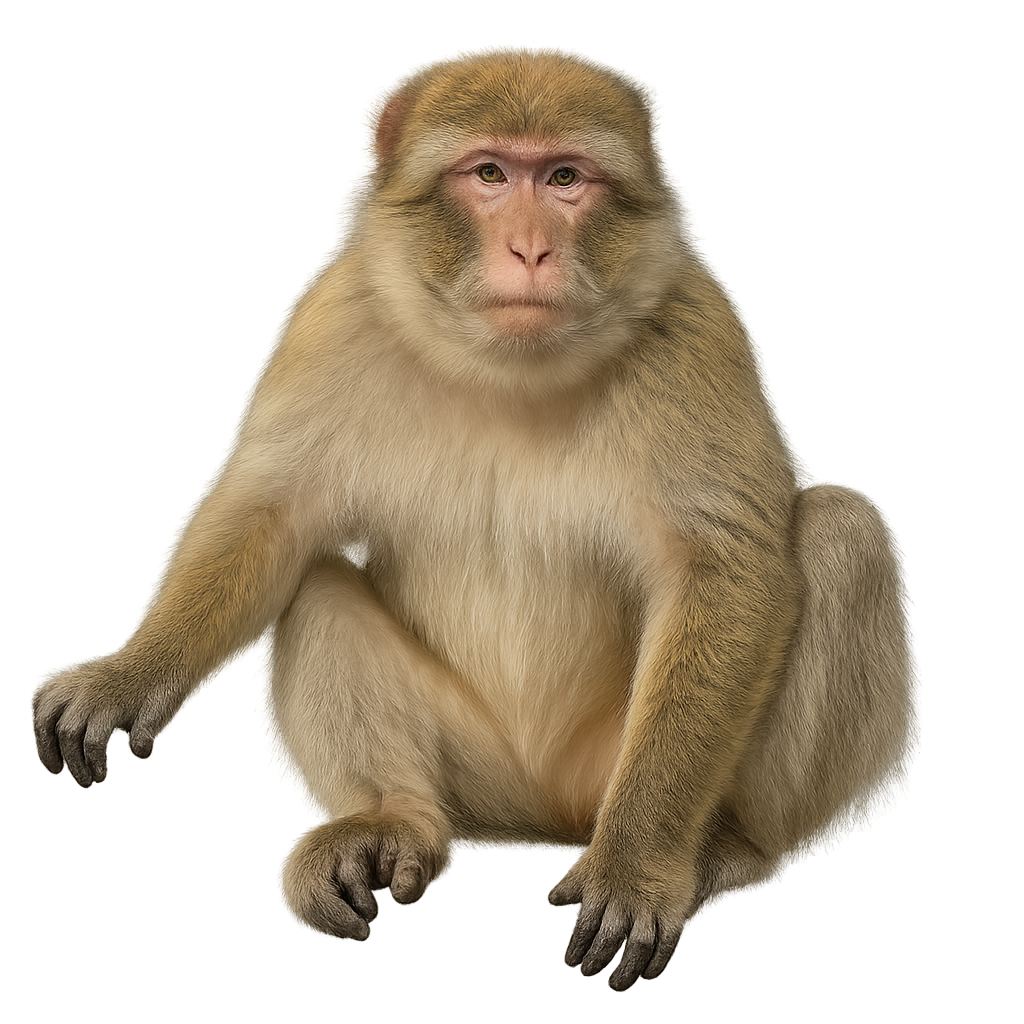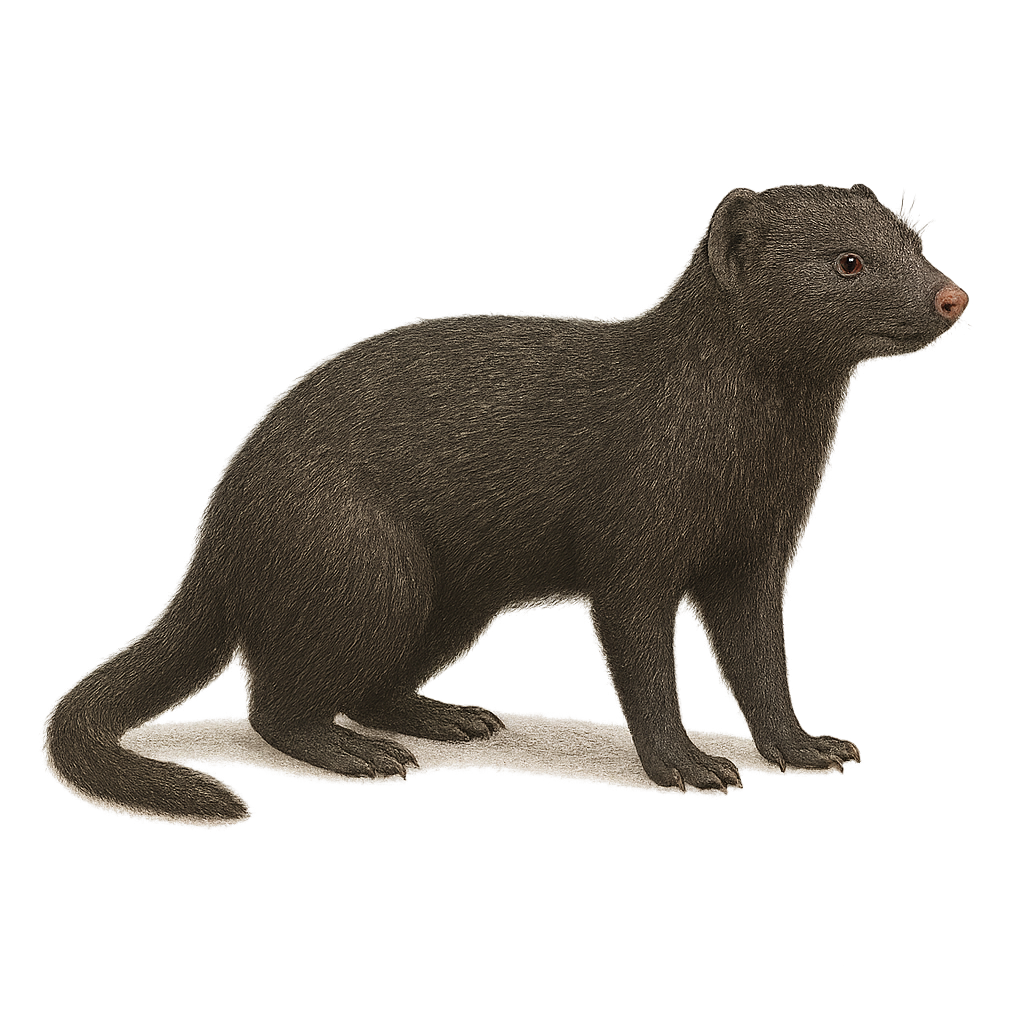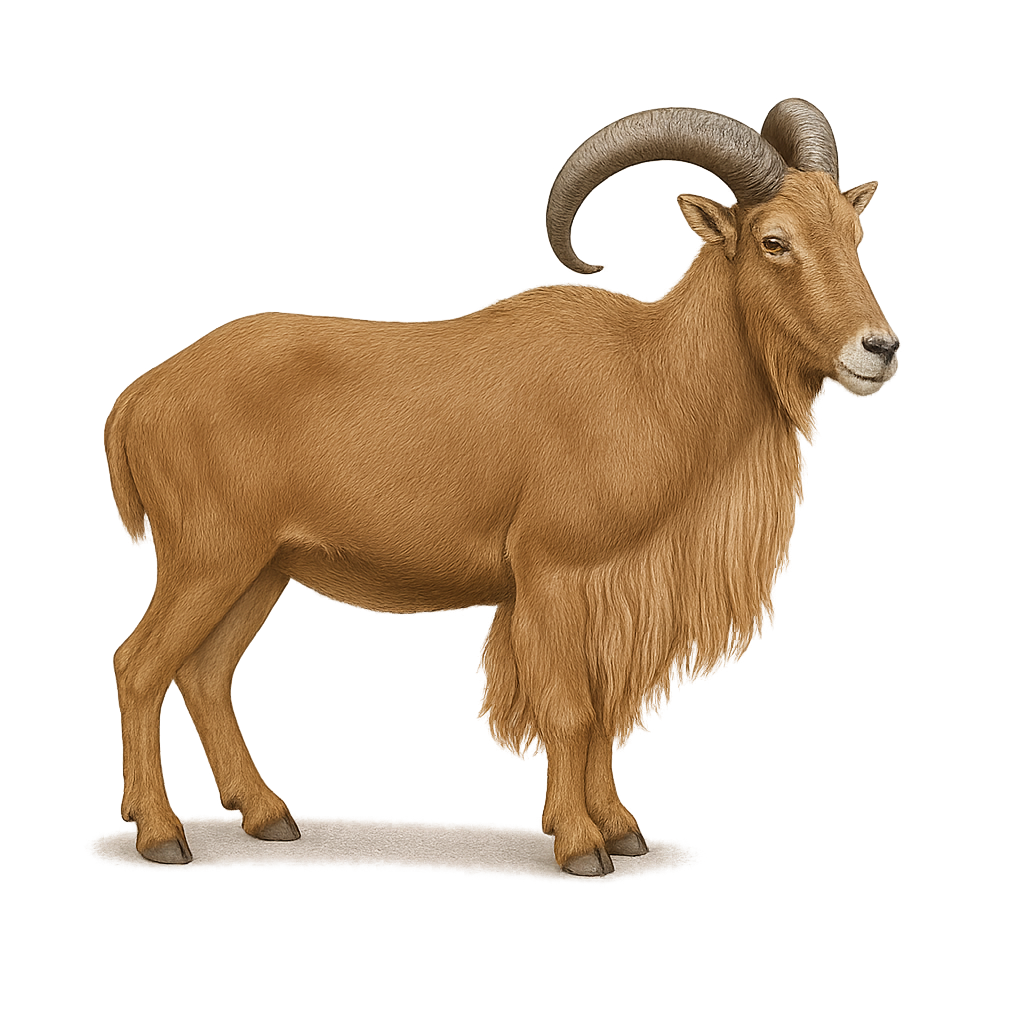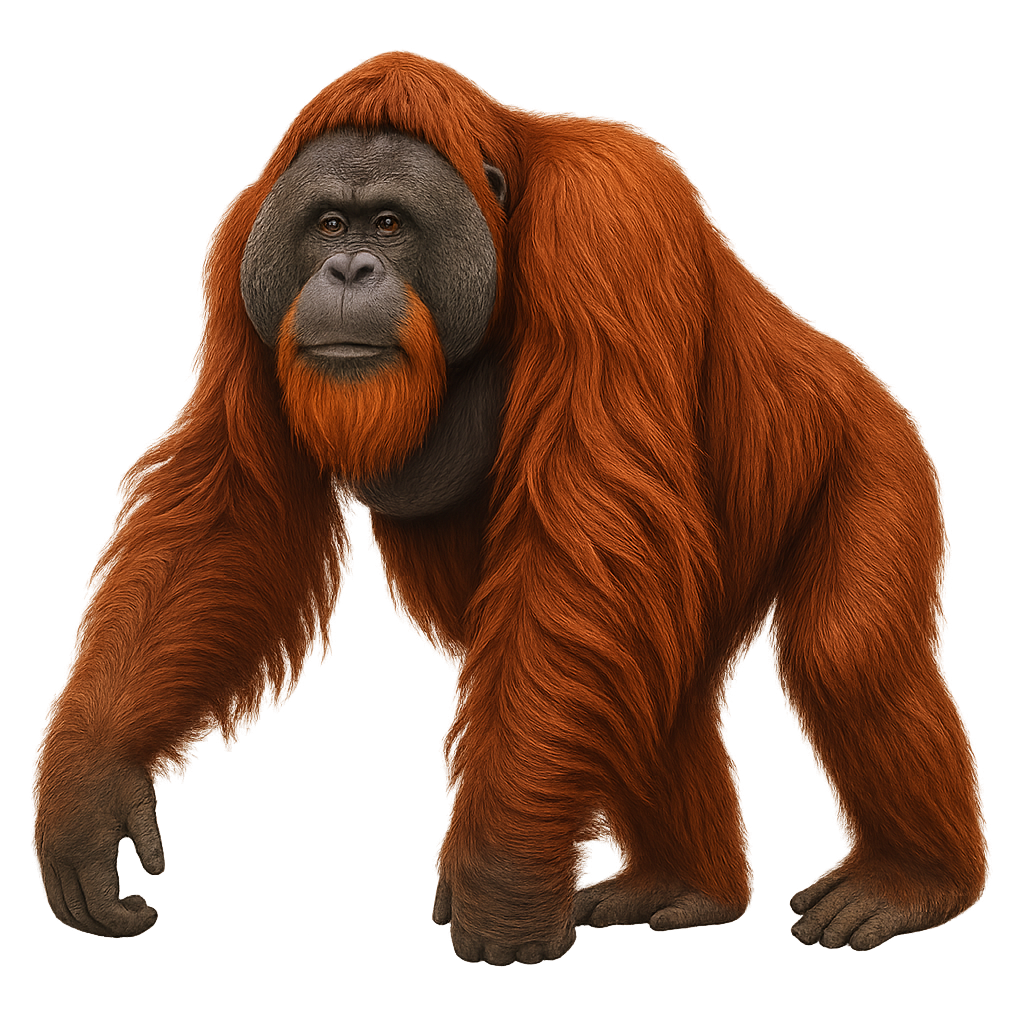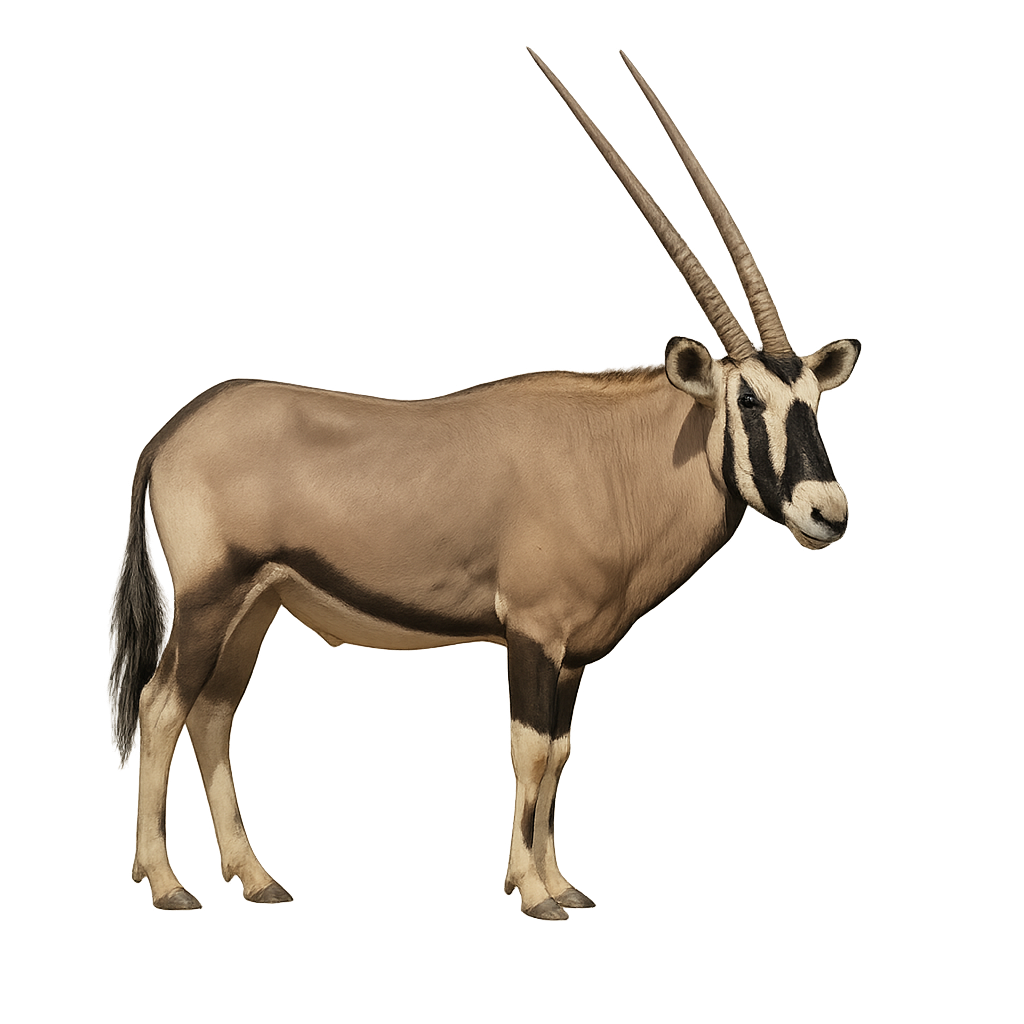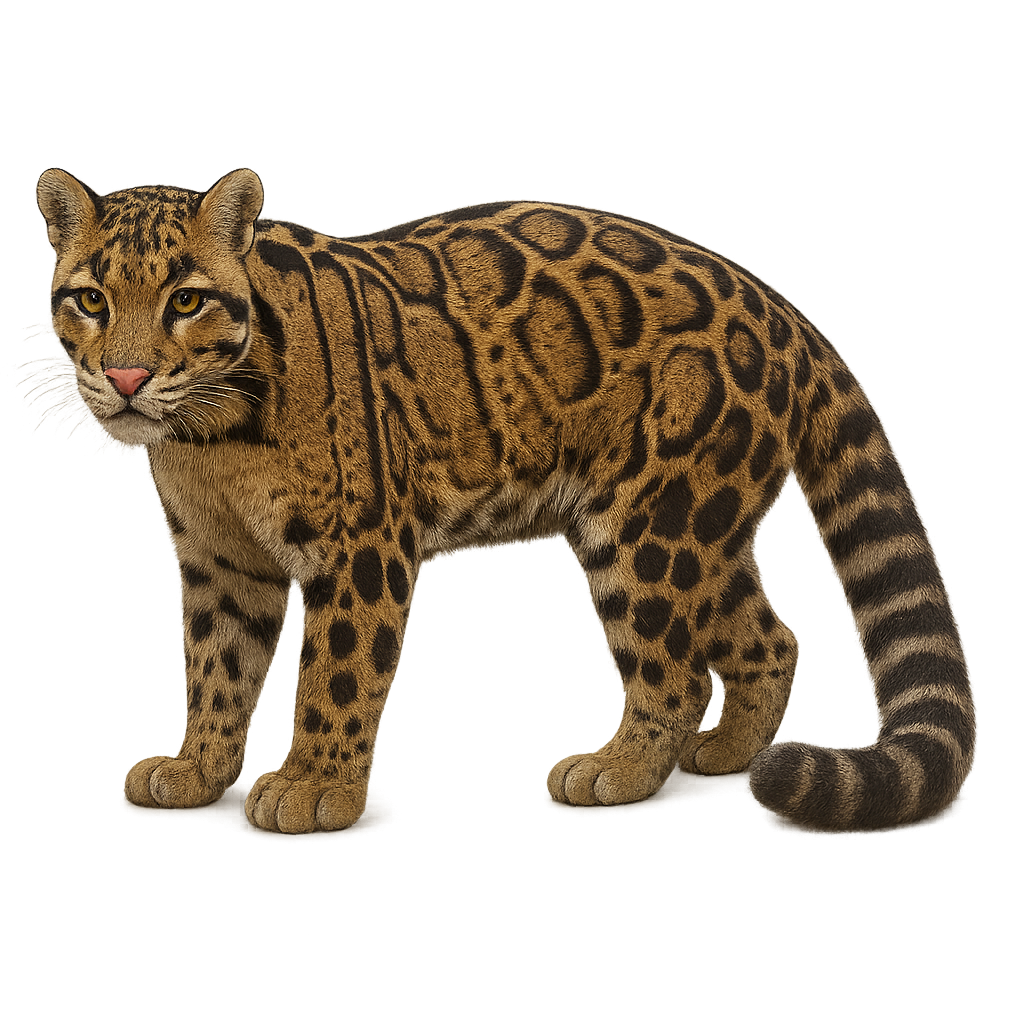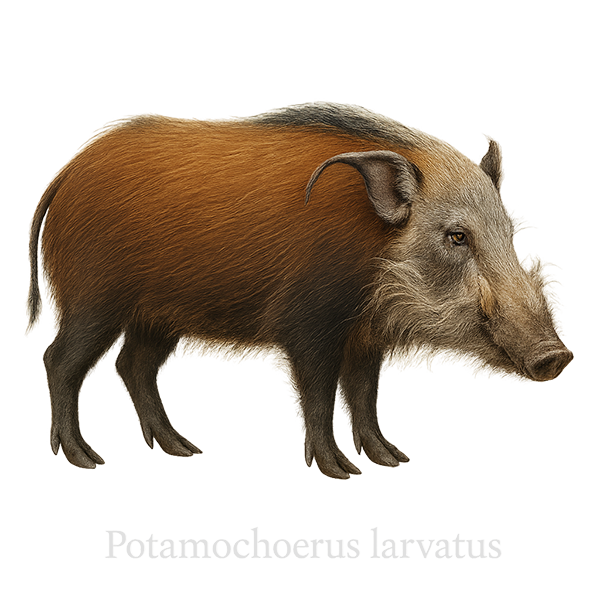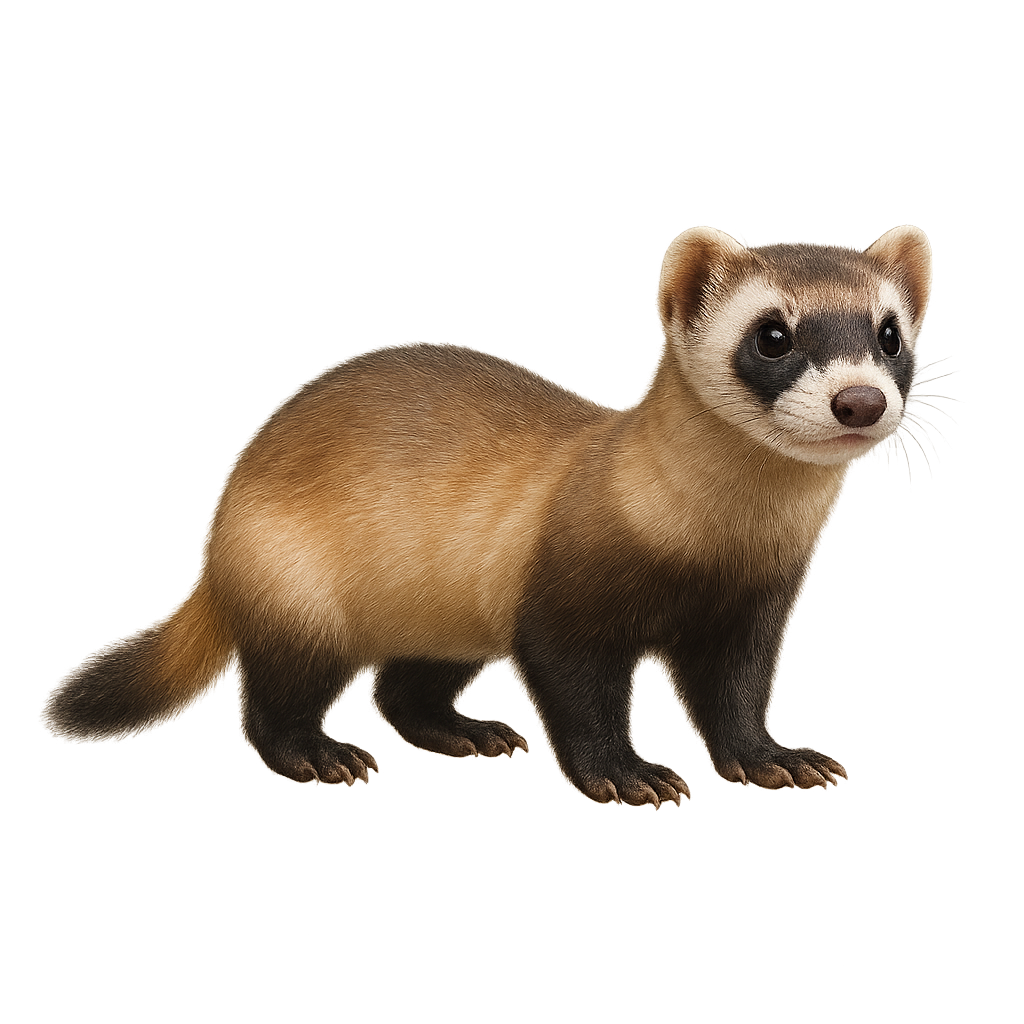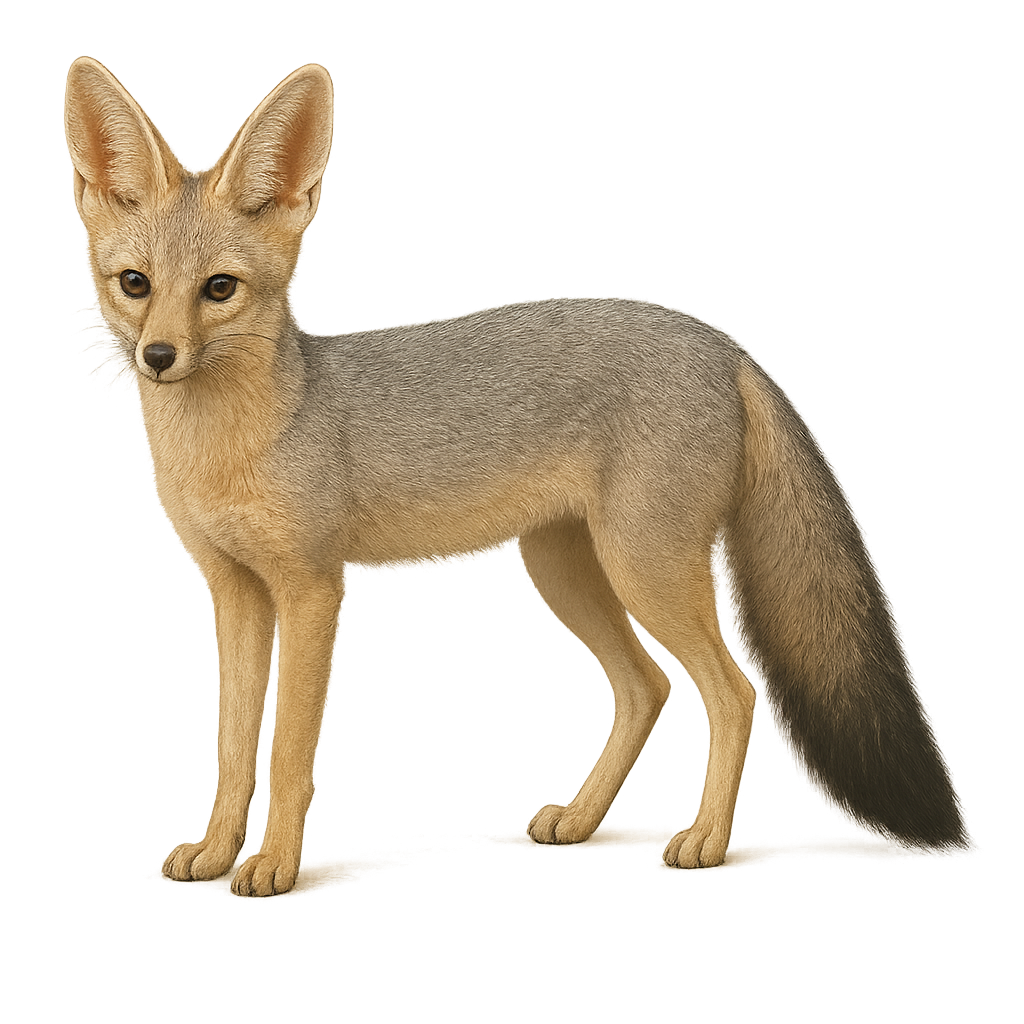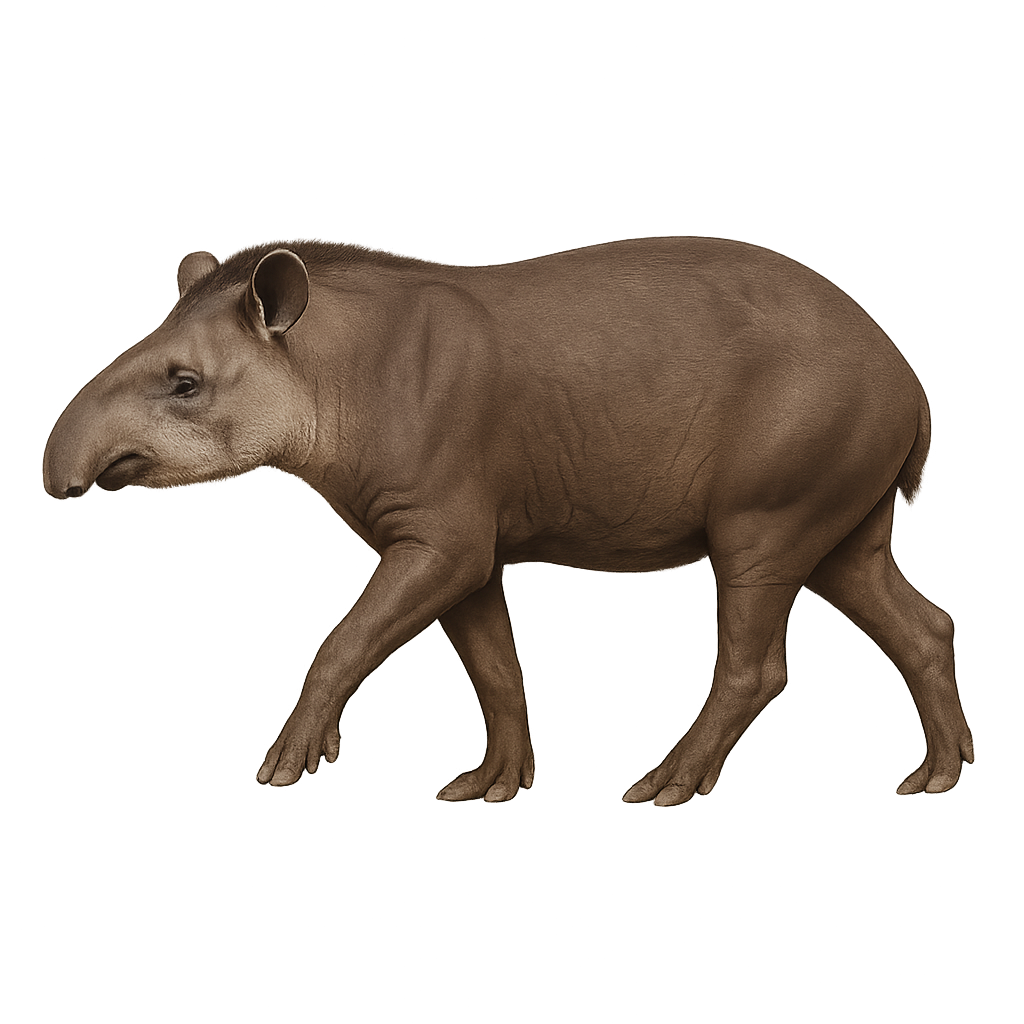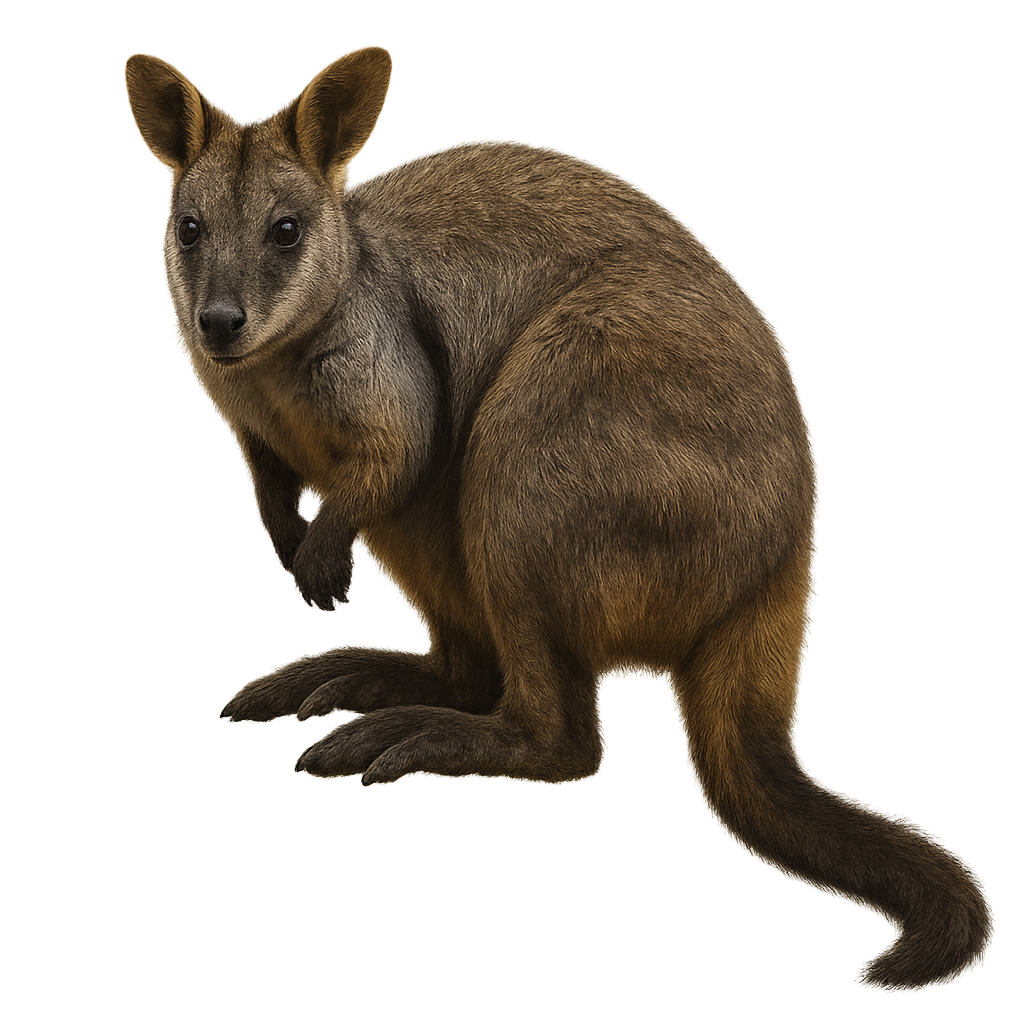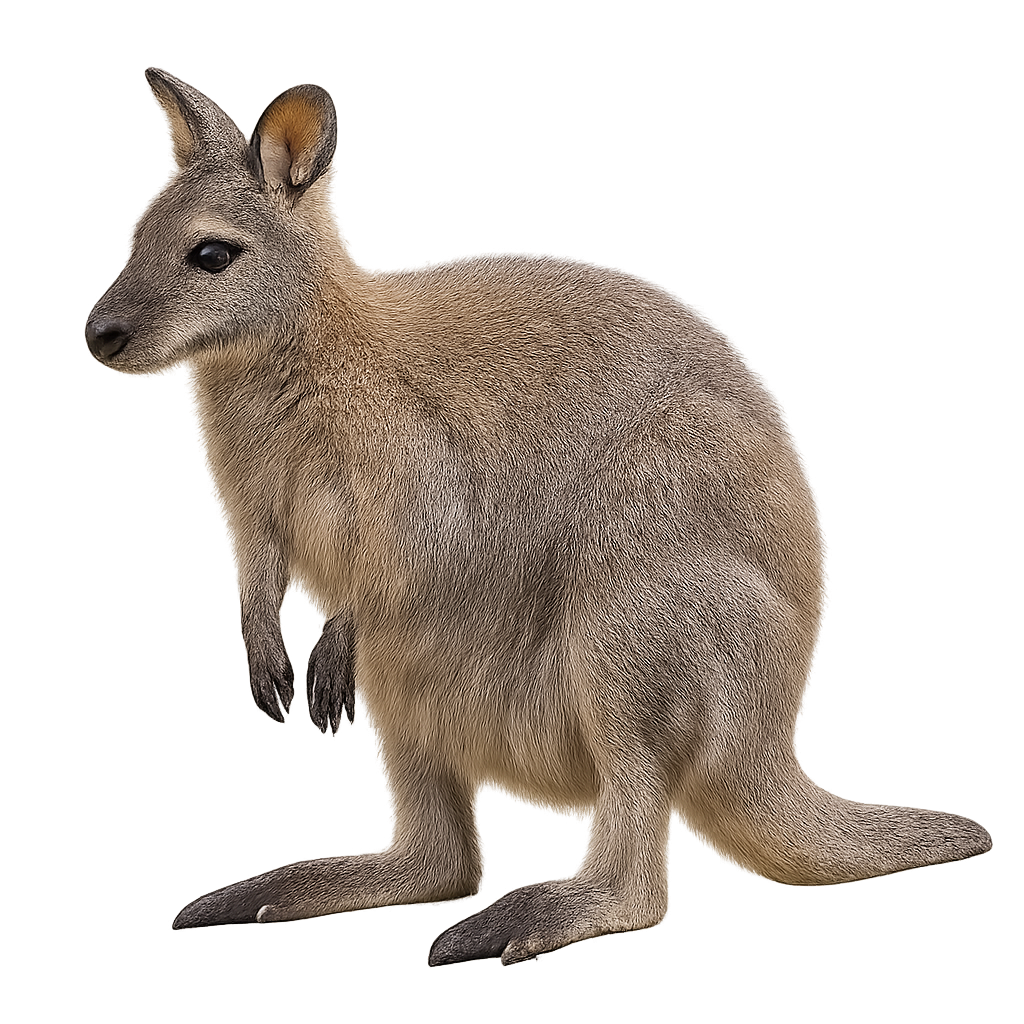The Coastal Wolf is a subspecies of the gray wolf primarily found along the coasts of Alaska and the North Pacific, as well as on certain islands. This wolf is adapted to its coastal environment, where it primarily hunts marine prey such as seals, fish, and seabirds. It measures about 1.3 to 1.5 meters in length, with a tail of about 30 to 40 cm, and weighs between 30 and 50 kg. Its coat is typically gray, brown, or black, with lighter shades on the belly and a thick mane around the neck. The Coastal Wolf is a social predator that lives in family groups and hunts in packs, often in areas close to water or on beaches. In addition to marine prey, it may also feed on deer, bears, and small mammals. While this subspecies is less widespread than others, it is well adapted to its environment and plays an important role in maintaining the balance of coastal ecosystems. However, it is threatened by habitat loss, human disturbances, and hunting.
The Bobcat is a medium-sized cat native to North America, where it is widespread, particularly in the United States, Canada, and Mexico. It measures about 80 to 110 cm in length, with a short tail of 10 to 15 cm, and weighs between 8 and 14 kg, although some males can reach 20 kg. Its coat is typically tawny or grayish with dark spots, and it has black tufts of fur on its ears, a characteristic feature of this species. The Bobcat is an excellent solitary hunter, primarily feeding on hares, rabbits, as well as birds and small mammals. It is particularly known for its ability to hunt in a variety of environments, ranging from dense forests to more open regions. This predator uses its great stealth to approach its prey before launching a quick attack. While the Bobcat remains relatively stable in terms of population, it is threatened by habitat loss and illegal hunting in some areas.
The Black-faced macaque is a primate native to the islands of Sulawesi in Indonesia. It is recognizable by its distinctive black face and gray or brown fur. This macaque is primarily frugivorous but also feeds on insects and small animals. It lives in complex social groups, often near rivers and tropical forests. The species is threatened by deforestation and the loss of its natural habitat.
The Barbary macaque is a large Old World monkey, measuring 55–75 cm in body length and weighing 10–18 kg, with greyish-brown fur and a paler crown. Endemic to the Atlas Mountains of Morocco and Algeria, it inhabits cedar forests, scrub and rocky slopes, feeding on fruits, leaves and insects. Social and matriarchal, it lives in family groups where males uniquely assist in infant care. During the breeding season (01.11-31.03), males display dominance through chest-posturing and vocal calls.
The bushy-tailed mongoose, or Bdeogale crassicauda, is a small African carnivore belonging to the Herpestidae family. It is characterized by its bushy tail and grayish-brown fur. Primarily nocturnal, it feeds on insects, small vertebrates, and fruits. It inhabits tropical forests, savannas, and wooded areas in East Africa. Although elusive, it is sometimes seen in small family groups. Its ability to adapt to various habitats allows it to survive in changing environments. However, deforestation and habitat loss pose potential threats to its population.
The Barbary sheep, or Ammotragus lervia, is a robust caprid native to the mountains of North Africa. It is characterized by a mane of long hair that runs down its neck and forelegs. Its coat is typically tawny, allowing it to blend into the arid, rocky landscapes it inhabits. Adapted to desert environments, it can survive with minimal water, extracting necessary moisture from its food. Males have large, backward-curving horns used in dominance battles. The Barbary sheep lives in small groups and primarily feeds on grasses, leaves, and shrubs.
The bighorn sheep, or Ovis canadensis, is a mammal native to the mountainous regions of North America. Known for its large, spiraled horns, it primarily inhabits rocky terrains. Males, called rams, are particularly striking with horns that can weigh up to 30 pounds. Females, or ewes, have smaller, less curved horns. These animals live in herds and are well adapted to rugged landscapes thanks to their specialized hooves. Their coat ranges from light brown to gray, with a distinctive white patch on the rump. They primarily feed on grasses, plants, and shrubs.
The Bornean orangutan is a large primate, measuring about 1.2 to 1.5 meters in height and weighing between 40 and 90 kg. It is easily recognized by its reddish fur and long arms, which allow it to move effortlessly through the trees. This species is native to the island of Borneo, where it primarily inhabits tropical forests. The Bornean orangutan is an herbivore, feeding mainly on fruits, leaves, bark, and small insects. It is a solitary animal, with very discreet behaviors and a great ability to adapt to its environment. Due to deforestation, illegal hunting, and the loss of its natural habitat, this species is classified as endangered.
The Beisa Oryx is a large antelope found primarily in the arid and semi-desert regions of East Africa, particularly in Somalia, Ethiopia, and Kenya. It stands between 1.2 and 1.5 meters at the shoulder and weighs around 100 to 150 kg. The Beisa Oryx is easily recognized by its long, straight horns, which can reach up to 1 meter in length. Its coat is sandy-colored, with black markings on the flanks, legs, and around the eyes, helping it blend into its desert environment. This herbivore feeds primarily on bushes, grasses, and succulent plants. Although the Beisa Oryx is capable of tolerating extremely high temperatures, it is also well adapted to cover large distances in search of food and water. This species is currently listed as "near threatened" due to habitat loss and hunting.
The Bat-eared Fox is a small carnivore primarily found in the savannas and semi-arid areas of Southern Africa. It measures about 40 to 50 cm in length, with a tail of 25 to 30 cm, and weighs between 1 and 2 kg. Its fur is primarily light gray or beige, with dark markings on the legs and face. What distinguishes it most are its large ears, which resemble those of a bat, and which are highly sensitive, allowing it to locate its prey, primarily insects, small mammals, and birds, through its acute hearing. The Bat-eared Fox is a nocturnal and highly social animal, often living in small groups. While its population remains relatively stable, it can be threatened by habitat destruction and hunting.
The Brown Bear is one of the largest terrestrial carnivores, measuring between 1.5 and 2.5 meters in length and weighing between 100 and 800 kg, depending on the subspecies and habitat conditions. Its coat ranges from light brown to dark brown, and it is often denser during the winter. The Brown Bear primarily lives in forests, mountains, and Arctic regions, but can also be found in tundra and prairie areas. It is omnivorous, feeding on fruits, roots, small mammals, fish, and even carrion. The Brown Bear is also an excellent swimmer and climber. Due to hunting, habitat loss, and conflicts with humans, some subspecies of Brown Bears are threatened or endangered.
The Bornean clouded leopard is a large forest-dwelling cat, measuring 70–110 cm excluding tail, with a distinctive cloud-patterned coat against a pale background. Endemic to Borneo and Sumatra, it inhabits tropical rainforests and cloud forests at low to mid elevations, moving adeptly both on the ground and in the canopy. Solitary and crepuscular, it is an expert hunter of mammals, birds, and reptiles thanks to its strong limbs and tail.
The Common Sloth is an arboreal mammal native to the tropical forests of Central and South America, particularly in South America, from Costa Rica to Brazil. It measures between 50 and 70 cm in length, with a tail of 4 to 6 cm, and weighs between 4 and 8 kg. Its fur is long and thick, gray-brown in color, with lighter and sometimes greenish patches due to algae growing on its hair. The Common Sloth primarily feeds on leaves, fruits, and flowers, which it eats very slowly. It is known for its extreme slowness, moving at a speed of 0.03 km/h, making it one of the slowest animals in the world. This behavior is due to its slow metabolism and a diet that is low in calories. Although the population of common sloths is not immediately threatened, they are vulnerable to habitat loss and human disturbances.
The bushpig, or Potamochoerus larvatus, is a mammal from the Suidae family, recognizable by its long-haired ears. It primarily inhabits forests, savannas, and wetlands in sub-Saharan Africa. This omnivorous suid feeds on roots, fruits, insects, and occasionally small animals. It lives in family groups and is known for its complex social behavior. Bushpigs are mainly nocturnal, making them difficult to observe. Their coat ranges from reddish-brown to black, with distinctive white facial markings. Although hunted for their meat, their population remains stable due to their adaptability.
The black-footed ferret, or Mustela nigripes, is a rare and iconic small carnivore of the North American prairies. It is distinguished by its light beige fur, black feet, and facial mask, as well as its slender body and bushy tail. This mustelid is a specialized predator, primarily feeding on prairie dogs. Unfortunately, it is critically endangered due to habitat loss and disease. Conservation efforts, including captive breeding and reintroduction into the wild, are crucial for its survival. The black-footed ferret is a symbol of prairie biodiversity and the importance of ecosystem conservation.
The Blanford's fox, or Vulpes cana, is a small canid primarily inhabiting the arid and mountainous regions of the Middle East. It is distinguished by its modest size, measuring about 40 cm in length, with a bushy tail almost as long as its body. Its fur is generally gray with shades of brown, allowing it to blend into its rocky environment. This fox is mainly nocturnal, helping it avoid the high daytime temperatures. It is omnivorous, feeding on small mammals, insects, fruits, and occasionally carrion. Although relatively unknown, it plays a crucial role in its ecosystem by regulating prey populations and dispersing seeds.
The Black Rhinoceros is a large species of rhinoceros primarily found in East and Southern Africa, notably in Kenya, Tanzania, Namibia, and South Africa. It measures about 3.5 to 4 meters in length, with a tail of 50 to 70 cm, and weighs between 800 and 1,400 kg. This rhinoceros is distinguished by its black skin (although some specimens may be gray) and its two horns located on its nose. Unlike the White Rhinoceros, it has a more pointed mouth, adapted for eating bushes and trees. The Black Rhinoceros is primarily herbivorous, feeding on leaves, fruits, twigs, and tree bark. While its population has long been threatened by poaching and habitat loss, conservation efforts have helped stabilize its population, although it remains critically endangered.
The Baird's Tapir is a species of tapir found primarily in the tropical forests of Central America, notably in Guatemala, Honduras, Costa Rica, and Nicaragua. It typically measures about 2 to 2.5 meters in length, with a short tail of 20 to 30 cm, and weighs between 200 and 300 kg. Its fur is predominantly black or dark brown, with lighter areas on its legs and ears. The Baird's Tapir has a long, flexible snout that allows it to grasp leaves, fruits, branches, and grasses. While it is an excellent swimmer and often spends time in water, it primarily lives in dense, humid forests. This species is threatened by deforestation, illegal hunting, and habitat loss, which has led to a decline in its population.
The Brazilian tapir, also known as the Amazonian tapir, is a large herbivorous mammal that lives in the humid tropical forests and wetland areas of the Amazon basin. It is easily recognized by its massive body, short legs, and elongated trunk-like nose, which it uses to grasp branches and leaves. The Brazilian tapir is primarily nocturnal and solitary, feeding mainly on fruits, leaves, and roots. While rather calm, it is an excellent swimmer and often spends time in water to cool off or move around. This tapir is currently listed as vulnerable due to habitat loss and hunting.
The Bengal Tiger is a subspecies of tiger found primarily in the forests of India, Bangladesh, Nepal, Bhutan, and Myanmar. It typically measures between 2.7 and 3.1 meters in length, with a tail of 1 to 1.2 meters, and weighs between 200 and 260 kg. Its fur is yellow-orange with distinct black stripes, and its impressive size makes it one of the largest and most powerful tiger subspecies. The Bengal Tiger is a solitary and territorial predator, primarily feeding on large herbivores such as deer, wild boars, and buffalo. Although its population is declining, the Bengal Tiger is one of the best-protected tiger subspecies, with active conservation efforts in wildlife reserves and national parks. It is still threatened by habitat loss, poaching, and human-wildlife conflicts.
The Petrogale penicillata, commonly known as the brush-tailed rock-wallaby, is a medium-sized marsupial distinguished by its long, bushy tail resembling a brush. Native to Australia, it primarily inhabits rocky and rugged regions where it can move with agility thanks to its powerful legs and sharp claws. Its fur is generally gray-brown with lighter shades on the belly, allowing it to blend into its surroundings. This wallaby is mainly nocturnal, resting in crevices during the day. Unfortunately, it is threatened by habitat loss and predation by introduced species.
The Bennett's wallaby is a small herbivorous marsupial, 70–100 cm long and 7–20 kg, with pale grey-brown fur. It inhabits open woodlands, grasslands and scrub in southeastern Australia and Tasmania, feeding on grasses and young shoots. During the breeding season (January 1 to March 31), males establish territories and perform bipedal hopping displays to attract females.


